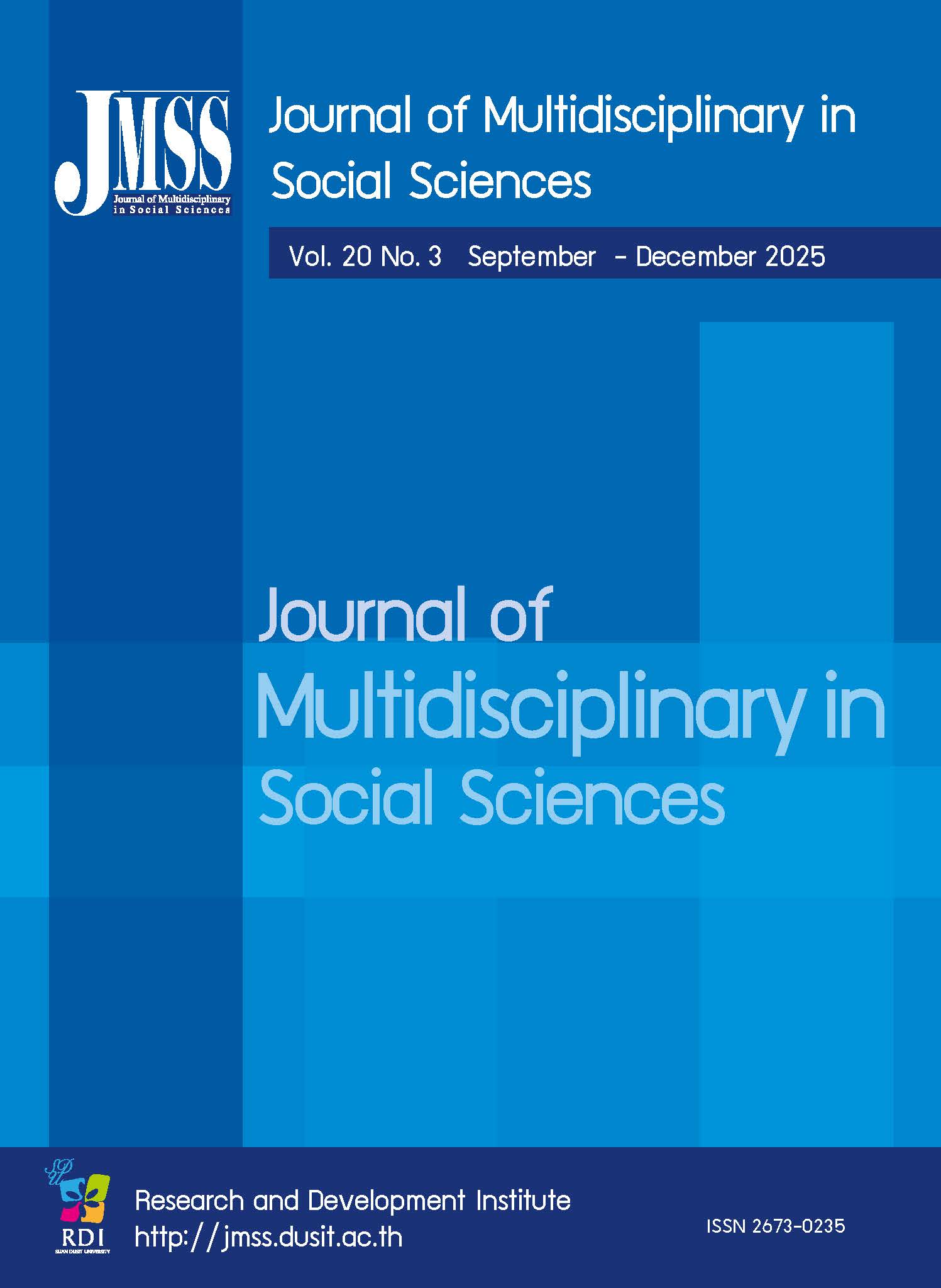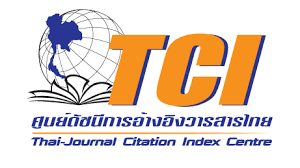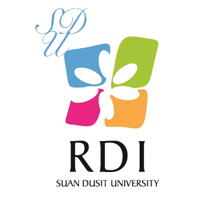Enhancing 3-Star Hotels to Wellness Hotels through User-Centered and UX/UI Design: A Case Study in Hua Hin District, Prachuap Khiri Khan
Keywords:
3-star hotels, Wellness Hotel, User-centered Design, UX/UI DesignAbstract
This research investigates the transformation of 3-star hotels into wellness hotels through user-centered and UX/UI design approaches in Hua Hin District, Prachuap Khiri Khan. The study employed a mixed-methods approach, combining qualitative interviews with three key informants and a quantitative survey of 50 tourists. The qualitative component provided in-depth insights into wellness tourism trends and challenges, while the quantitative survey assessed tourists’ preferences and expectations regarding wellness amenities and services. Key qualitative findings revealed that successful wellness hotel transformations require a comprehensive approach integrating physical design, service offerings, and digital experiences. Quantitative results showed that tourists prioritize hydrotherapy (16.7%), health exercise (16.0%), and massage (12.8%) as top wellness activities. For dining, 30.9% emphasized healthy food menus, and 20.0% prioritized healthy beverages. Based on these insights, prototypes for websites, menus, and signage were developed and evaluated by 50 hotel entrepreneurs and related agencies. The overall satisfaction with the prototypes was high (mean = 4.24, SD = 0.267). This research contributes to understanding that user-centered and UX/UI design can effectively transform 3-star hotels into wellness-oriented establishments. The high satisfaction ratings suggest that the developed prototypes have significant potential for enhancing user experiences and hotel competitiveness in the wellness tourism market. These findings provide design strategies, services, and product information for 3-star hotels seeking to enhance their offerings and competitiveness in the evolving wellness tourism market, potentially contributing to the broader development of wellness tourism in Thailand.
References
Abdo, A. & Shokry, M. (2020). Health and Wellness Resort. Journal of Critical Reviews, 7(8), 209-214.
Ari, A.P. & Vivi, E. (2021). Perancangan user interface website E-Commerce Pada Usaha Kuliner Menggunakan User Centered design. Journal Computer Science and Information Technology, 2(1), 1-8.
Bendegul, O. & Heather, L.K. (2022). Wellness management in hospitality and tourism. Oxfordshire: Goodfellow Publishers.
Bong, W.K., Yousaf, A., Li, Y.J., & Chen, W. (2022). Designing and developing a web application of food products focusing on plant-based diets for better health. In: Duffy, V.G., Gao, Q., Zhou, J., Antona, M., & Stephanidis, C. (Eds.), HCI International 2022 – Late Breaking Papers: HCI for Health, Well-being, Universal Access and Healthy Aging. HCII 2022. Lecture Notes in Computer Science, vol. 13521 (pp.46-60). Washington DC: Springer Nature.
Braun, V., & Clarke, V. (2006). Using thematic analysis in psychology. Qualitative Research in Psychology, 3(2),
–101.
Chi, C. G., Chi, O. H., & Ouyang, Z. (2020). Wellness hotel: Conceptualization, scale development, and validation. International Journal of Hospitality Management, 89, 102404.
Chiangphan, N. & Vongsaroj, R. (2023). Exploring green factors and green practices: Best green small hotels in Thailand’s active beach cluster. Journal of Multidisciplinary in Social Sciences, 20(1), 16-28.
Creswell, J. W., & Poth, C. N. (2018). Qualitative inquiry and research design: Choosing among five approaches.
(4th ed.). California: Sage Publications.
Diah, A.L., Hari, W.U., Abednego, D.S. (2023). Redesign website Pariwisata Berbasis User Centered Design (UCD). Jurnal Riset Komputer, 10(2), 615-615.
Global Wellness Institute. (2023). 2024 Global wellness economy monitor. Retrieved July 10, 2024, from https://globalwellnessinstitute.org/industry-research/2024-global-wellness-economy-monitor/.
Guest, G., Bunce, A., & Johnson, L. (2006). How many interviews are enough?: An experiment with data saturation and variability. Field Methods, 18(1), 59-82.
Hasna, T.Y. and Wahyu, T.A. (2022). UI/UX design for tourism village website using the user centered design method. TIERS Information Technology Journal, 3(2), 100-114.
Hoover, E. (2022). The rise of wellness hotels: A case study of six senses. Journal of Hospitality and Tourism Research, 46(5), 892-910.
Johnson, A. B., Smith, C. D., & Wilson, E. F. (2023). Evaluating guest satisfaction in luxury wellness hotels: A comparative analysis of design elements and service quality. International Journal of Hospitality Management, 108, 103481.
Kadieva, S. (2015). Contemporary changes in the hotel product for spa and wellness tourism and their distribution. Bizinfo (Blace), 6(1), 1-10.
Kanjanasilanon, C. (2021). Creating customer value and satisfaction in hotel business. Veridian E-Journal, Silpakorn University, 9(2), 154-168.
Kim, J., & Lee, J. C. (2022). The impact of hotel website design on customer satisfaction and booking intentions. International Journal of Hospitality Management, 102, 103148.
Kotler, P., & Keller, K. L. (2009). Marketing management. (13th ed.). New Jersey: Prentice Hall
Lowdermilk, T. (2013). User-Centered Design, USA: O'Reilly Media.
Masagué, S. G., & Macià, J. L. (2015). User-centered design for emotion: A case study in wellness products. In F. Boulanger, D. Krob, G. Morel, & J. C. Roussel (Eds.), Complex systems design & management (pp. 193–206). Berlin: Springer.
Nongsai, P. B., Sangthima, W., Kaewoyaem, W., & Towmit, S. (2022). Policy of International Health Center (Medical Hub) (2017-2026). Ratanabuth Journal, 4(3), 387-398.
Nor, A.I., Siti, F.N., Simon, Y., Layla, H., Su, E.M., Wong, Y.L, Khalid, K.A. (2021). User-Centered Design and evaluation of web and mobile based travelling applications. International Journal of Advanced Computer Science and Applications, 12(8), 463-470.
Office of the Permanent Secretary. (2017). The Second National Tourism Development Plan (2017-2021), Office of the Permanent Secretary, Ministry of Tourism and Sports. Retrieved July 24, 2021, from https://www.mots.go.th/news/
Rafi, K.N., Gani, M.O., Hashim, N.M.H.N., Rahman, M.S., & Masukujjaman, M. (2024). “The influence of 360-degree VR videos on tourism web usage behaviour: the role of web navigability and visual interface design quality”. Tourism Review, (in press).
Smitha, M.K. (2022). Wellness Tourism. In D. Buhalis (Ed.). Encyclopedia of tourism management and marketing (pp. 735-738). UK: Edward Elgar Publishing.
Taheri, B., & Okumus, F. (2024). Conducting mixed methods research. International Journal of Contemporary Hospitality Management, 36(3), 995–1004.
Techasriamornrat, S. (2021). Special interview 'Tourism will never be the same again' Discussing Thai tourism in the post-COVID world with TAT Governo. Retrieved August 20, 2021, from https://workpointtoday.com/tat-interview-tourism-future,
Tetiana, S., and Oksana, K. (2023). Wellness tourism as service innovation of the hospitality industry. Pričornomorsʹkì ekonomìčnì studìï, 79-35.
Truong, D., Xiaoming Liu, R., & Yu, J. (Jasper). (2020). Mixed methods research in tourism and hospitality journals. International Journal of Contemporary Hospitality Management, 32(4), 1563–1579.
Vatsal, S., & Ankit, K. T. (2021). A study on user interface and user experience designs and its tool. World Journal of Research and Review, 12(6), 40-44.
Yin, R. K. (2018). Case study research and applications: Design and methods (6th ed.). California: Sage Publications.
Yudho Y., Wahyu M. P., & Winita S. (2022, August). Designing and Making UI/UX Designs on The Official Website with The Design Thinking Method. Paper presented at the 1st International Conference on Smart Technology, Applied Informatics, and Engineering, Surakarta, Indonesia. from https://ieeexplore.ieee.org/stamp /stamp.jsp?tp=&arnumber=9918684
Downloads
Published
How to Cite
Issue
Section
License
Copyright (c) 2024 Journal of Multidisciplinary in Social Sciences

This work is licensed under a Creative Commons Attribution-NonCommercial-NoDerivatives 4.0 International License.








